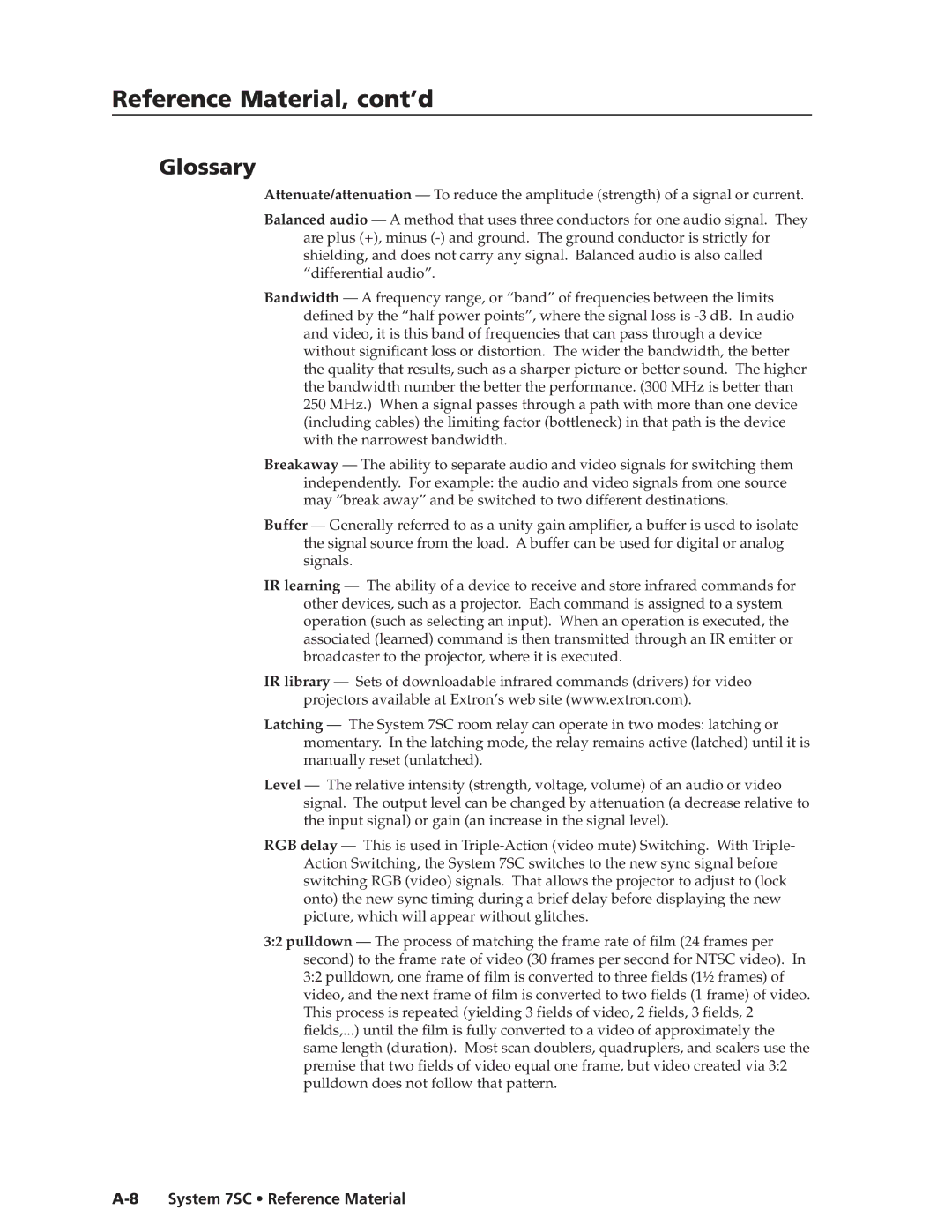Reference Material, cont’d
Glossary
Attenuate/attenuation — To reduce the amplitude (strength) of a signal or current.
Balanced audio — A method that uses three conductors for one audio signal. They
are plus (+), minus
Bandwidth — A frequency range, or “band” of frequencies between the limits defined by the “half power points”, where the signal loss is
Breakaway — The ability to separate audio and video signals for switching them independently. For example: the audio and video signals from one source may “break away” and be switched to two different destinations.
Buffer — Generally referred to as a unity gain amplifier, a buffer is used to isolate the signal source from the load. A buffer can be used for digital or analog signals.
IR learning — The ability of a device to receive and store infrared commands for other devices, such as a projector. Each command is assigned to a system operation (such as selecting an input). When an operation is executed, the associated (learned) command is then transmitted through an IR emitter or broadcaster to the projector, where it is executed.
IR library — Sets of downloadable infrared commands (drivers) for video projectors available at Extron’s web site (www.extron.com).
Latching — The System 7SC room relay can operate in two modes: latching or momentary. In the latching mode, the relay remains active (latched) until it is manually reset (unlatched).
Level — The relative intensity (strength, voltage, volume) of an audio or video signal. The output level can be changed by attenuation (a decrease relative to the input signal) or gain (an increase in the signal level).
RGB delay — This is used in
3:2 pulldown — The process of matching the frame rate of film (24 frames per second) to the frame rate of video (30 frames per second for NTSC video). In 3:2 pulldown, one frame of film is converted to three fields (1½ frames) of video, and the next frame of film is converted to two fields (1 frame) of video. This process is repeated (yielding 3 fields of video, 2 fields, 3 fields, 2 fields,...) until the film is fully converted to a video of approximately the same length (duration). Most scan doublers, quadruplers, and scalers use the premise that two fields of video equal one frame, but video created via 3:2 pulldown does not follow that pattern.
